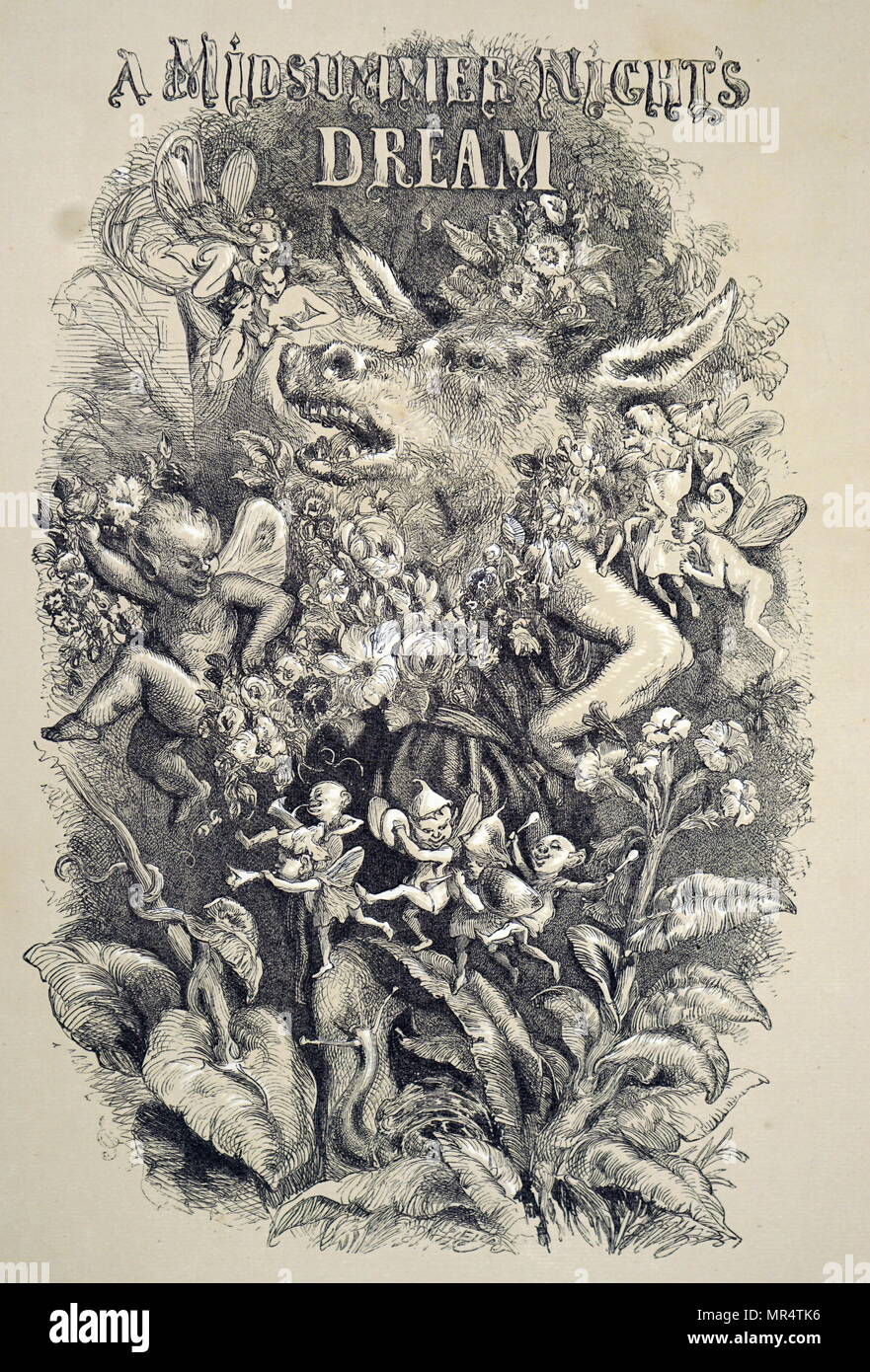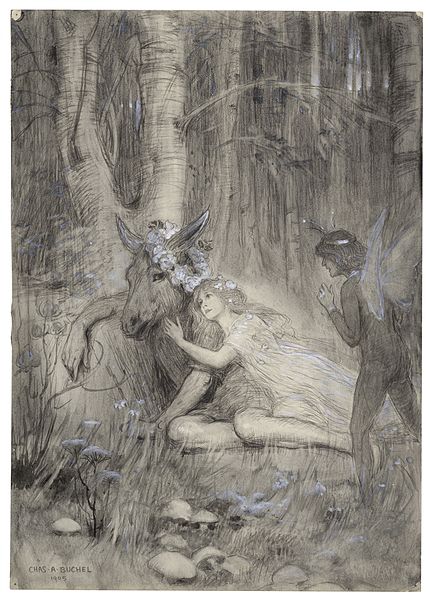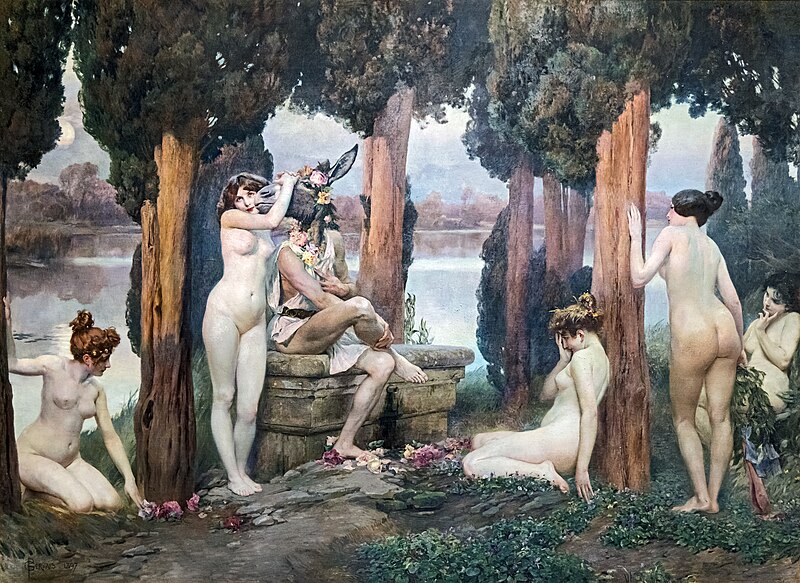A Midsummer Night's Dream - William Shakespeare
74

"A Midsummer Night's Dream" is one of William Shakespeare's most enchanting and whimsical comedies. Here's a brief analysis of the play:
1) Themes of Love and Romance:
- Central to the play is the theme of love, explored through the intertwining romantic relationships of the characters. The playful and sometimes chaotic nature of love is depicted through the various couples, including Hermia and Lysander, Helena and Demetrius, and the fairy king and queen, Oberon and Titania.

2) Magic and Fantasy:
- The play features magical elements with the inclusion of fairies and the mischievous Puck. The forest setting becomes a realm of enchantment and confusion, allowing Shakespeare to explore the blurred lines between reality and illusion.

3) Mistaken Identities:
- "A Midsummer Night's Dream" relies on the theme of mistaken identities and misunderstandings, particularly in the love entanglements. The misadventures of the characters create humor and contribute to the comedic atmosphere.

4) Social Hierarchies and Relationships:
- The play subtly explores social hierarchies and the dynamics of relationships. The interactions between the nobility, the mechanicals, and the fairies reflect the complexities of societal structures.

5) Foolishness and Folly:
- The play features moments of foolishness and folly, often associated with the mischievous Puck and the antics of the mechanicals as they attempt to perform a play. These elements contribute to the lighthearted and comedic tone of the play.

6) Transformation and Metamorphosis:
- Transformation is a recurring theme, both in terms of the physical transformations enacted by Puck and the metaphorical transformations experienced by the characters in their romantic relationships.

7) Play Within a Play:
- The inclusion of the play within a play, performed by the mechanicals, adds a layer of meta-theatricality. This device provides comic relief and allows Shakespeare to comment on the nature of theater itself.

8) Nature and the Supernatural:
- The play explores the connection between nature and the supernatural, particularly through the involvement of the fairies. The forest setting becomes a magical realm where the natural and supernatural coexist.

9) Triangular Relationships:
- The love triangles in the play, such as the one involving Hermia, Lysander, and Demetrius, contribute to the comedic misunderstandings and complications. These relationships highlight the irrational and unpredictable nature of love.

10) Resolution and Harmony:
- The play concludes with a resolution that restores order and harmony. The various romantic entanglements are sorted out, and the characters find themselves in fitting pairings, emphasizing the theme of love's ability to bring about balance and happiness.
"A Midsummer Night's Dream" is celebrated for its delightful blend of humor, romance, and fantasy. The play's exploration of love and the whimsical interactions of its characters make it a timeless and enjoyable work in the realm of Shakespearean comedy.

Here is audiobook ''A Midsummer Night's Dream'' for those who have no time to read the play;
A Midsummer Night's Dream by William Shakespeare Audiobook;
References;
- "Ken Ludwig – Playwright: Shakespeare in Hollywood". www.kenludwig.com. Archived from the original on 27 October 2019. Retrieved 14 October 2019.
- Garden, Robin (2014). Shakespeare Reloaded. Cambridge University Press. p. 135. ISBN 978-1-107-67930-6.
- ^ "BFI Screenonline: Ill Met By Moonlight (1957)". www.screenonline.org.uk. Retrieved 18 January 2018.
- Levenson, Jill L.; Ormsby, Robert (2017). The Shakespearean World. Taylor & Francis. ISBN 978-1-317-69619-3.
- "'Fools and Mortals' finds Shakespeare's brother taking center stage". The Christian Science Monitor. 16 January 2018. Retrieved 14 April 2020.
- Leeds Barroll, Anna of Denmark, Queen of England: A Cultural Biography (Philadelphia: University of Pennsylvania Press, 2001), p. 83.
Thank you for reading!
You can complete great comment tasks at here. #amidsummernightsdream #shakespeare #play #theatre #analysis #bookreview #audiobook














































![[ℕ𝕖𝕧𝕖𝕣] 𝕊𝕖𝕝𝕝 𝕐𝕠𝕦𝕣 𝔹𝕚𝕥𝕔𝕠𝕚𝕟 - 📈ALT season 40% vs No ALT season 60%📉](https://cdn.bulbapp.io/frontend/images/d2fb6be9-79f1-42ad-b3c2-b55996aa9941/1)
